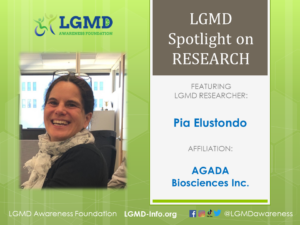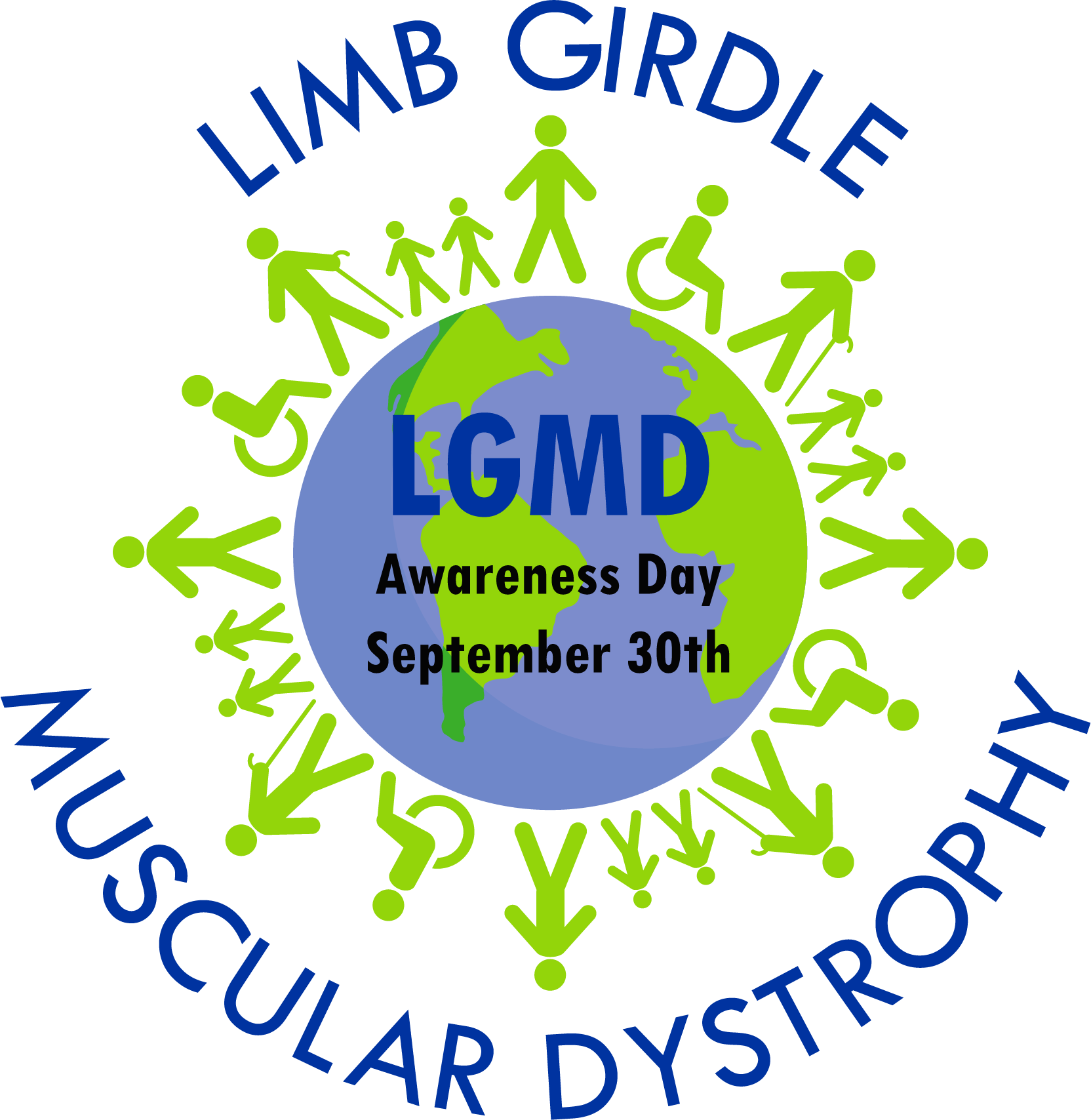LGMD RESEARCHER: Pia Elustondo

LGMD RESEARCHER: Dr. Pia Elustondo
Affiliation: AGADA Biosciences
Role or Position: Director of Research
What education and training did you have to arrive at your current position?
I have a broad background; I studied biochemistry and mechanisms of human disease during my undergraduate and graduate degrees. During my postdoctoral studies, I focused on mitochondrial function in stroke and neurodegenerative disease models (Niemann Pick) before joining the muscular dystrophy community. I wanted to expand my expertise to other disease conditions such as muscular dystrophies, and, in 2018, I joined AGADA Biosciences, a company that specializes in neuromuscular dystrophies. I started in a scientist position and rapidly grew to the position of Director of Research. In my role, I supervise research scientists working on mouse and zebrafish models of muscular dystrophy.
What led you to follow a career in research and in studying muscular dystrophy in particular?
My curiosity led me to do research, and my interest in mitochondria biology connected me with muscular dystrophy because mitochondria play a significant role in muscle function, and if they don’t work well, it can lead to muscle weakness and fatigue. AGADA Biosciences was established to specifically facilitate drug development for rare muscle diseases, including LGMD. One of the objectives of AGADA is to train and develop a scientific workforce that focuses on muscular dystrophy. Pursuing a career doing muscular dystrophy research and training scientists in the area fulfill my career goals.
What topics are you studying?
We investigate the reasons that lead to muscle dysfunction in muscular dystrophies. We generate and systematically characterize the disease progression and drug efficacy in animal models, including mice and zebrafish. Our aim is to screen and identify interventions (drugs, gene therapy, biologics, etc.) that potentially improve muscle function in these disorders. In addition, we also study the biochemical outcomes to assess drug efficacy in patients participating in muscular dystrophy clinical trials.
How will your work help patients? Is it more scientific in nature, or might it become a treatment for LGMDs or MDs in general?
We aim to find safe and effective interventions in animal models of muscular dystrophies. We want to provide data that provides the confidence to transition a drug safely to human clinical trials. Some of our studies are scientific in nature, but our ultimate goal is to use these results as biomarkers of disease progression and response to therapy.
What would you like patients and others interested in LGMD to know about research (your own projects and about the field in general)?
We want the patients to know that the scientific community has made significant progress in finding treatments for muscular dystrophies such as DMD. This gives us confidence that it is possible to make similar progress in finding effective treatments for LGMDs. Our own research utilizes the latest technologies, such as CRISPR to generate zebrafish models for LGMDs that will allow rapid and cost-effective drug testing.
What inspires you to continue working in this field?
I want the quality of life of the patients and caregivers to improve; this is what inspires me to continue doing research.
How can patients encourage you and help your work?
Patients support these initiatives by participating in clinical trials, raising awareness, and doing fundraisers. This is very motivating for me, and I would say for the entire research community.







